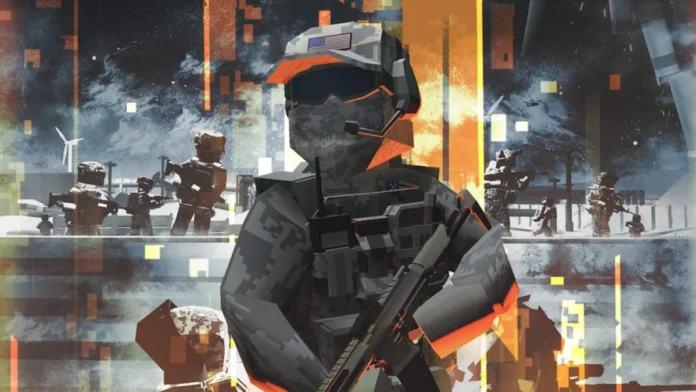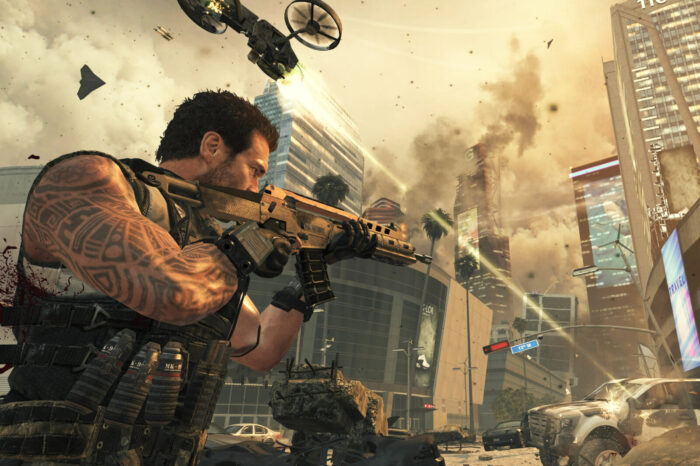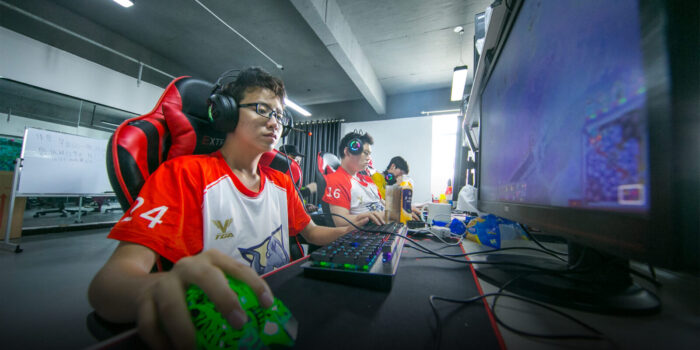
Gaming culture has undergone myriad changes throughout the decades, with various genres experiencing their own evolutions. Among these genres, shooting games, often called “shooters,” have consistently remained at the forefront. From the pixelated Space Invaders of yesteryears to the hyper-realistic first-person shooters (FPS) of today, the journey is both thrilling and intricate.
A Humble Beginning: Pixel Enemies and Fixed Shooters
In the late 1970s and early 1980s, shooting games were in their nascent stage. The graphics were rudimentary, with pixelated representations. Games like Space Invaders and Galaxian introduced players to the basic concept of shooting down alien invaders. These titles, often categorized as fixed shooters, didn’t allow the player’s character to move up or down, only sideways. Friv5Online Games Studio was a pioneer for online flash gaming.
However, despite their simplicity, they were revolutionary. These games brought in a sense of urgency, challenge, and competition, which were relatively new to the gaming world.
Birth of the Arcade Era: Run and Gun
By the mid-1980s, technology allowed for better graphics and more advanced gameplay mechanics. Enter the arcade era. Shooting games transitioned from fixed shooters to “run and gun” titles, where players could not only shoot but also navigate their characters through levels. Contra and Metal Slug are shining examples of this period. These games incorporated multiple weapons, diverse enemies, and intricate levels, making them instant classics.
Rise of the FPS: A New Perspective

The 1990s ushered in a significant shift in shooting games: the first-person perspective. Titles like Doom and Wolfenstein 3D put players directly into the shoes of the protagonist, viewing the game world through their eyes. This created an immersive experience that hadn’t been possible before.
This period was transformative. Multiplayer functionality became prominent, and the gaming community started to grow exponentially. Games like Quake and Unreal Tournament introduced players to online shooting battles, laying the foundation for the massive multiplayer online shooters we see today.
Tactical Shooters: Thinking Before Shooting
Not all gamers were interested in just running and gunning. Many sought a more strategic, realistic approach to shooting games. By the late 1990s and early 2000s, titles like Tom Clancy’s Rainbow Six and Counter-Strike emerged, emphasizing tactics, team coordination, and strategy over pure action.
In these games, players needed to consider their environment, coordinate with teammates, and often, a single bullet could determine victory or defeat. This sub-genre injected a dose of realism into the world of shooting games.
Modern Warfare: Realism Redefined
As gaming consoles and PCs became more powerful, game developers had tools to create almost lifelike graphics and physics. The mid-2000s saw the rise of titles like Call of Duty: Modern Warfare, which not only boasted high-definition visuals but also incorporated realistic warfare tactics, weaponry, and scenarios.
These games mirrored real-world conflicts and challenged players to think like soldiers on the field. The stories became more intense, the characters more fleshed out, and the line between gaming and cinematic experiences began to blur.
Battle Royale: Survival of the Fittest

By the late 2010s, a new sub-genre took the world by storm: Battle Royale. Games like PUBG (PlayerUnknown’s Battlegrounds), Fortnite, and Apex Legends threw players into a large map, with the objective being the last person or team standing. These games combined shooter mechanics with survival elements, creating a tense and unpredictable gameplay experience.
The social aspect of these games, combined with streaming platforms like Twitch, propelled shooting games to cultural phenomena, transcending traditional gaming audiences.
VR Shooters: Immersion Amplified
Virtual Reality (VR) began as a niche in the gaming industry but quickly found its place in shooting games. Titles like Superhot VR and Half-Life: Alyx offered players a level of immersion that was previously unattainable. Being able to aim, shoot, and take cover in a virtual space changed the dynamics of shooting games, making them feel more personal and intense.
Looking Ahead: What’s Next for Shooters?
As technology continues to advance, the potential for shooting games remains limitless. Augmented reality, haptic feedback suits, and AI-driven scenarios are just some of the innovations on the horizon. As the genre has shown time and again, it is adaptable, resilient, and ever-evolving.
eSports: Competitive Shooting Takes Center Stage

In the late 2010s and early 2020s, another phenomenon arose in parallel with the popularity of shooting games: eSports. Competitive gaming was no longer relegated to informal challenges between friends; it became a global enterprise. Titles like Counter-Strike: Global Offensive, Overwatch, and Valorant became staples of the competitive scene, with major tournaments offering million-dollar prize pools.
eSports not only provided players with opportunities to turn their passion into a profession but also elevated the profile of shooting games in popular culture. Massive arenas were filled with fans cheering for their favorite teams, further solidifying shooting games as more than just a pastime, but a legitimate sport.
The Integration of Narrative
The 2010s also saw a marked increase in the importance of storytelling within shooting games. Previously, many shooting games prioritized gameplay over narrative. But titles like BioShock, The Last of Us, and Destiny showcased that compelling stories and character development could coexist with riveting shooting mechanics. This blending of narrative and action provided players with deeper emotional connections to the games they played, making their experiences more memorable and impactful.
The Indie Revolution and Experimental Shooters
While major game studios were producing blockbuster shooters, the indie game community was not far behind, offering their own fresh takes on the genre. Games like Enter the Gungeon, Nuclear Throne, and Hotline Miami deviated from conventional shooting mechanics, introducing roguelike elements, top-down perspectives, and unique art styles. These titles demonstrated that innovation in shooting games wasn’t exclusive to big-budget productions.
The Social Impact of Shooting Games

As shooting games became more realistic and immersive, they also began to face scrutiny from various quarters of society. Concerns about the potential influence of violent games on young minds emerged. However, numerous studies have shown that there isn’t a direct correlation between playing violent games and aggressive behavior. Still, the discourse brought about essential conversations about age-appropriate content and the role of parental guidance.
Moreover, shooting games also became platforms for social interactions. Online multiplayer modes became virtual hangout spots, enabling players from around the world to connect, collaborate, and forge friendships.
Augmented Reality: Merging Worlds
Following the VR wave, Augmented Reality (AR) began to show potential in reshaping shooting games. Instead of transporting players to a virtual world, AR games brought virtual elements into the real world. Games like Pokémon Go (though not a shooter) demonstrated the potential of AR. It’s exciting to speculate how shooting mechanics can be integrated into AR, providing a hybrid gaming experience.
Final Thoughts: An Ever-Changing Landscape
The world of shooting games has been one of constant evolution, driven by technological advancements, creative innovations, and player demands. As we stand at the cusp of a new era in gaming, with emerging technologies like neural interfaces and more advanced AI, the possibilities seem endless.
From those early days of pixelated space invaders to the vast, interconnected worlds of today’s shooters, the journey has been nothing short of spectacular. Shooting games, with their blend of action, strategy, storytelling, and competitive spirit, will undoubtedly continue to shape the fabric of gaming culture for years to come.
















